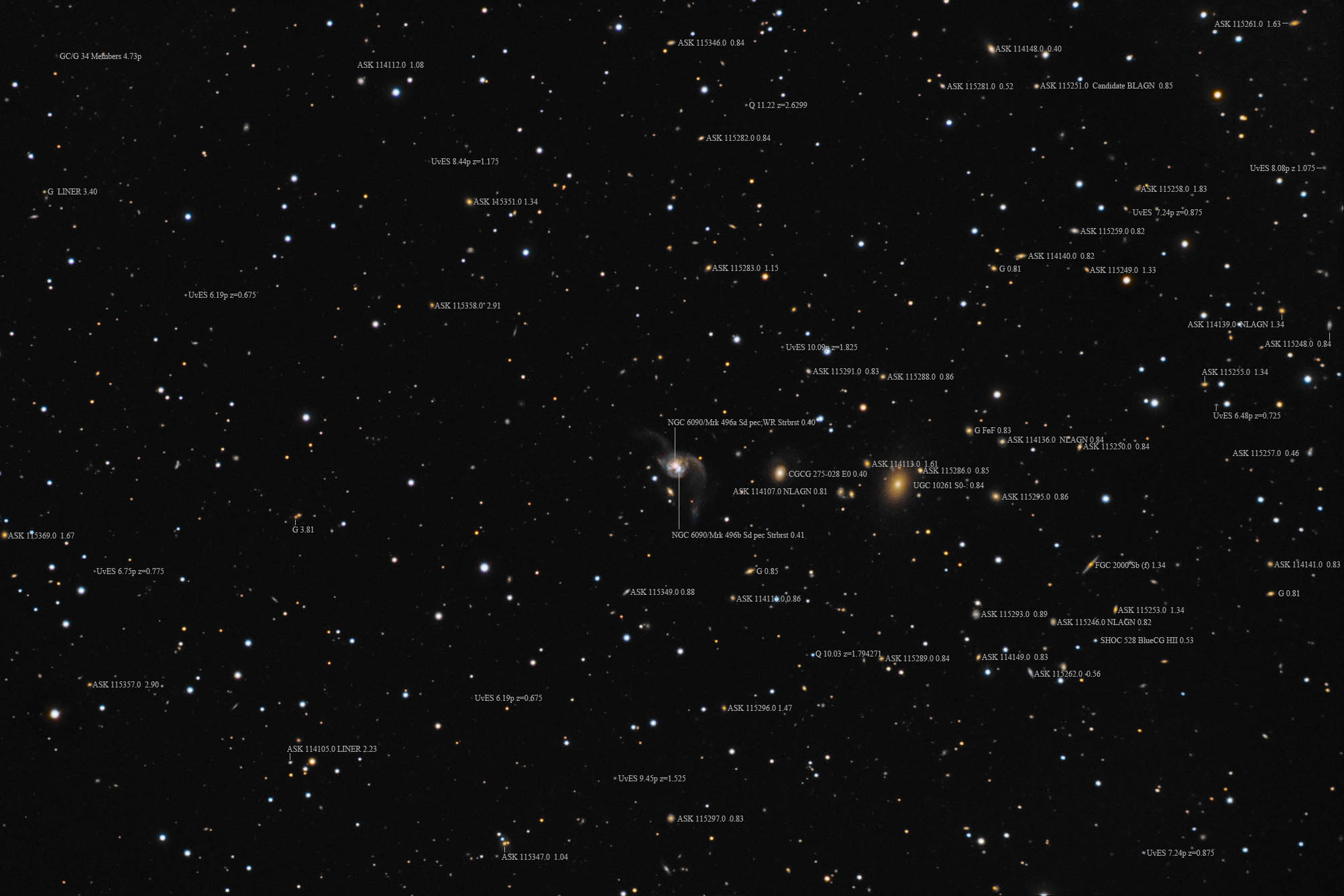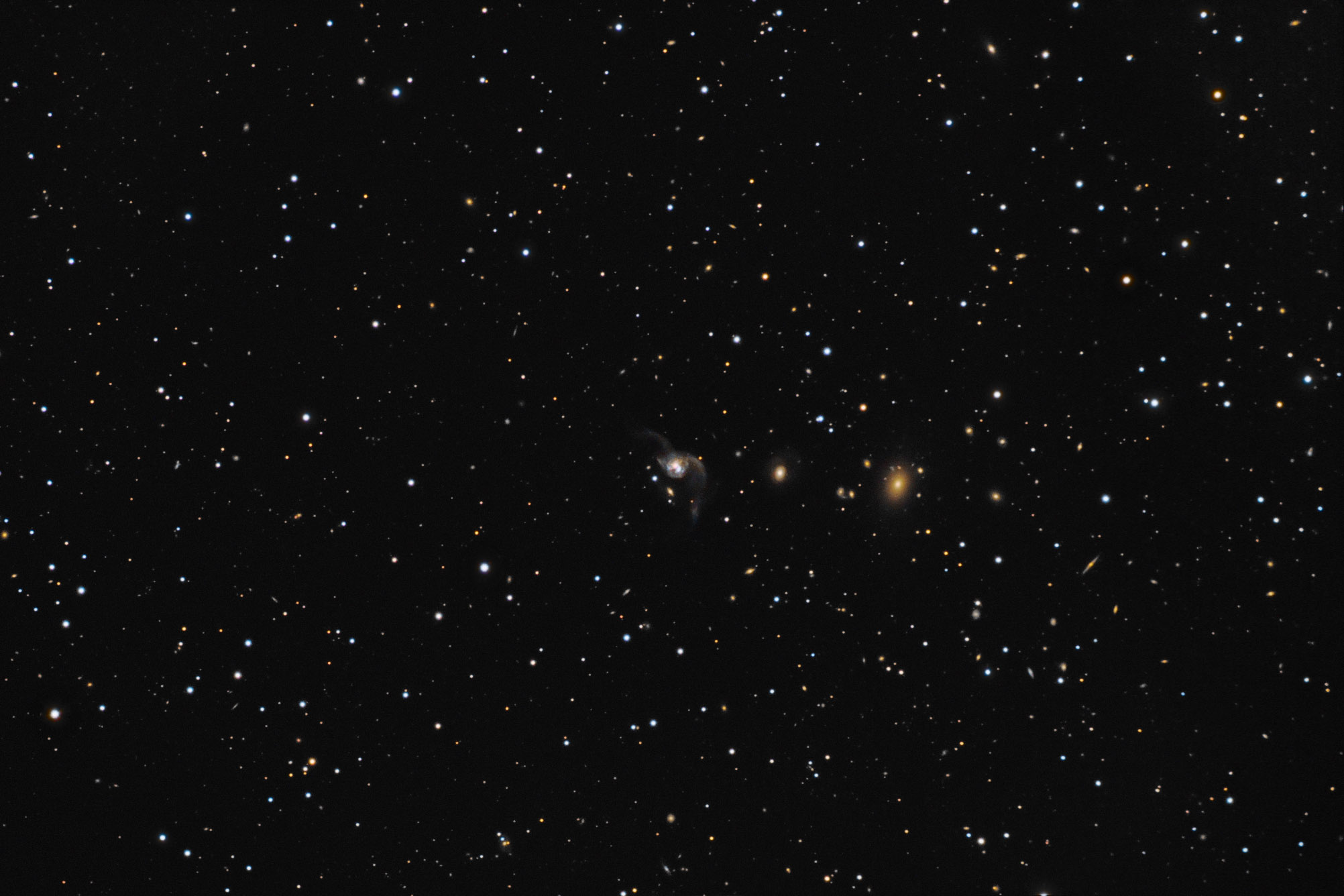| Description | Images |
Object name: NGC6090Designation(s): NGC6090, UGC10261, Mrk 496/NGC 6090 is a pair of merging galaxies, a bit over 400 million light-years distant in Draco. They remind me of the Antenna galaxies, Arp 244 but for some reason, these didn't make it into his atlas and they did. The northern galaxy is quite red while the southern is blue. Both are listed at NED as being Sd pec starburst galaxies. Nearby is CGCG 275-028 an E0 galaxy with plumes. Did it also interact with Mrk 496 or one of its galaxies or is the plume due to some other unfortunate galaxy it consumed in the recent past? While there's information on Mrk 496 I found little on this companion. The third major galaxy in this field is UGC 10261. The three comprise the WBL 610 galaxy group though UGC 10261 is not at all related to the other two galaxies. In fact, it seems to be the major galaxy in its own galaxy cluster SDSS-C4 3095 which NED lists as having 24 members. I find some 23 galaxies at its approximate distance of 840 million light-years in the frame. NED gives no angular size for the cluster. It appears to cover much of the right half of my image. It is a huge galaxy that I measure at over 300,000 light-years in size. It dwarfs Mrk 496 which I measure at only 51,000 light-years for the two galaxies themselves. Adding in the plumes they are much larger at a bit under 300,000 light-years so again UGC 10261 without plumes still beats it. CGCG 275-028 including plumes is only 100,000 light-years in size. Ignoring the plumes it is only 37,000 light-years in size. NGC 6090 was discovered by Lewis Swift on June 24, 1887. Related Designation(s):2MASS J16110407+5227010, 2MASX J16110404+5227006, 2MASXi J1611040+522701, 2MASXi J1611408+522726, AKARI J1611405+522728, CGCG 1609.8+5234, CGCG 1610.4+5235, CGCG 275-027, CGCG 275-029, CGCG 276-002, CGPG 1610.4+5235, GALEXASC J161104.15+522701.6 , GALEXMSC J161104.18+522702.6 , GALEXMSC J161140.71+522722.3 , I Zw 135, IRAS 16104+5235, IRAS F16104+5235, KPG 486, MCG +09-26-061, MCG +09-26-064, Mr19:[BFW2006] 03388 NED13, MRK 0496, NGC 6090, NGC6090, NPM1G +52.0250, NVSS J161140+522726, PGC 057404, PGC 057437, SBS 1610+525, SDSS J161104.06+522701.2, SDSS J161104.07+522701.1, SNF 20080512-010 HOST, UGC 10261, UGC 10267, UGC10261, UZC J161140.7+522725, VV 626, WBL 610-001, WBL 610-003, WHL J161104.1+522701 BCG, [BFW2006] J242.76697+52.45040 , [DJ2011] 17, [H84a] 1610+526, [LXM2008] J242.76700+52.45030 , [RHM2006] LIRGs 033, | Permanent link: https://images.mantrapskies.com/catalog/NGC/NGC6090-UGC10261/NGC6090L8X10RG2X10B4X10CROP125.JPG |


